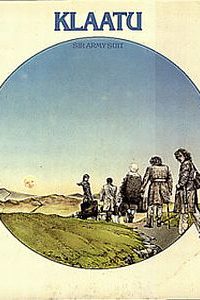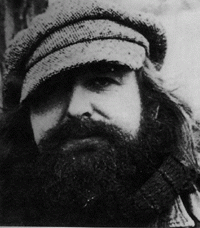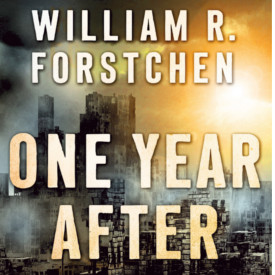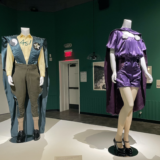 Let’s travel back in time, you and I. Let’s go back to a time before music was delivered in packets of data. Let’s travel back to a time of bell bottoms, long hair and muscle cars. Let’s go back to the 1970’s
Let’s travel back in time, you and I. Let’s go back to a time before music was delivered in packets of data. Let’s travel back to a time of bell bottoms, long hair and muscle cars. Let’s go back to the 1970’s
The idea of music imprinted on vinyl discs may seem like a science fiction (or perhaps a steampunk) idea to kids today used to music coming from the same place as their texts, tweets and tumblr images, but to those of us of a certain age, the era of the vinyl album is redolent with nostalgia. But the biggest difference with the vinyl album as compared to an .mp3? Room – LOTS of room – for cover art!
Vinyl albums were HUGE and the sleeves in which they came had to be decorated with artwork in order to attract buyers. Sometimes pictures of the artists were enough, sometimes albums called for a little more than that.
Let’s talk about two bands who had a fantasy or SF angle to them, not just in their cover art, but in their music as well.
Klaatu was the name of Michael Renni’s character in the classic film THE DAY THE EARTH STOOD STILL. If you’ve seen that film (the original, not the remake with Keanu Reeves) then you know that Klaatu’s flying saucer landed in Washington DC at 3:47 Eastern Standard Time.
KLAATU is also the name of a Canadian band from the seventies and early eighties. KLAATU was a trio from Ontario, John Woloschuk, Dee Long and Terry Draper. The band went on to release five studio albums of what was at the time labelled “progressive rock”. The name KLAATU is not the only science fiction connection for the band. Many of their tunes. particularly from their first two albums, have many sf and fantasy references. For an SF and fantasy crazy kid growing up in the seventies the band’s first album was an amazing discovery.
 Their first album, 3:47 E.S.T., was released in 1976. Probably the best known cut off that album is track 1: CALLING OCCUPANTS OF INTERPLANETARY CRAFT. Most people know it because of the cover version that was released by THE CARPENTERS in 1977, but the song was originally written by band member John Woloschuk. The idea for this track was suggested by an actual event that is described in “The Flying Saucer Reader”, a book by Jay David published in 1967. In March 1953 an organization known as the “International Flying Saucer Bureau” sent a bulletin to all its members urging them to participate in an experiment termed “World Contact Day” whereby, at a predetermined date and time, they would attempt to collectively send out a telepathic message to visitors from outer space. The message began with the words…”Calling occupants of interplanetary craft!”
Their first album, 3:47 E.S.T., was released in 1976. Probably the best known cut off that album is track 1: CALLING OCCUPANTS OF INTERPLANETARY CRAFT. Most people know it because of the cover version that was released by THE CARPENTERS in 1977, but the song was originally written by band member John Woloschuk. The idea for this track was suggested by an actual event that is described in “The Flying Saucer Reader”, a book by Jay David published in 1967. In March 1953 an organization known as the “International Flying Saucer Bureau” sent a bulletin to all its members urging them to participate in an experiment termed “World Contact Day” whereby, at a predetermined date and time, they would attempt to collectively send out a telepathic message to visitors from outer space. The message began with the words…”Calling occupants of interplanetary craft!”
The album contains some great songs, a few of which are overtly sf or fantasy oriented, notably the tracks ANUS OF URANUS, Doctor Marvello, Sir Bodsworth Rugglesby III, and Little Neutrino
 The band’s second album, HOPE was released in 1977. It was a concept album, recorded with the London Symphony Orchestra, about the sole survivor of an arrogant race of beings, who warns space travellers of hazards in the last days of his life. Many fans and critics consider Hope to be the most creative of the Klaatu albums.
The band’s second album, HOPE was released in 1977. It was a concept album, recorded with the London Symphony Orchestra, about the sole survivor of an arrogant race of beings, who warns space travellers of hazards in the last days of his life. Many fans and critics consider Hope to be the most creative of the Klaatu albums.
The first two albums had a sound that was somewhat reminiscent of The Beatles and this was commented upon by a number of music reviewers. This, coupled with the lack of biographical details offered up by Klaatu, helped inspire a rumour concocted by Providence Journal reviewer Steve Smith in February 1977 that the album might be an anonymous project by The Beatles themselves. The rumour turned into a global phenomenon with Beatle fans being fed “clues” by radio stations and print media alike.
While all this was happening, Klaatu was in England, recording their second album. They were somewhat aware of the situation with regards to the rumours, but didn’t take them entirely seriously—possibly because the UK’s New Musical Express famously published an article on the Beatles-as-Klaatu theory under the title “Deaf Idiot Journalist Starts Beatle Rumour”. Capitol Records, meanwhile, tried to make as much capital out of the rumours as possible, by issuing ambiguously worded statements that failed to make the band’s identity entirely clear.
The rumour was soon disproved when Dwight Douglas, program director at WWDC in Washington, D.C., checked the records at the U.S. Copyright Office and uncovered the band members’ real names.
 Sir Army Suit, their third album is notable for the track “Silly Boys,” which contains the entire lyrical portion of “Anus of Uranus” – a song from their first album – backwards-masked interspersed between the “Silly Boys” lyrics. For both these releases, the band continued their policy of not including any individual names of band members in the credits, nor did they play any live shows or make any public appearances to promote these albums.
Sir Army Suit, their third album is notable for the track “Silly Boys,” which contains the entire lyrical portion of “Anus of Uranus” – a song from their first album – backwards-masked interspersed between the “Silly Boys” lyrics. For both these releases, the band continued their policy of not including any individual names of band members in the credits, nor did they play any live shows or make any public appearances to promote these albums.
Upon the release of their fourth studio album Endangered Species in 1980, the band for the first time included their individual names in the album package, making it clear that there was no musical connection to any former Beatle. As well, songs were now credited to their individual writers, rather than the “All songs written by Klaatu” credit of old. (Subsequent re-issues of earlier Klaatu material, as well as newly published Klaatu sheet music, also gave credit to the actual songwriters of each track, rather than a collective credit.)
Although forced by Capitol to record Endangered Species in Los Angeles using established studio musicians to shore up the group’s commercial chances, the album was a critical and commercial flop. The album’s poor showing resulted in Capitol Records dropping the group.
Eventually signed by Capitol’s Canadian division, Klaatu released their final album, Magentalane, in Canada in 1981. This album saw the group returning to their brand of Beatles-influenced pop/rock. Standout cuts from this album include the title song, MAGENTALANE as well as the whimsical MRS’ TOADS COOKIES.
As a contractual obligation to Capitol-EMI in Canada, the band were forced to play their first ever live dates and tour most of Canada to promote the Magentalane album. From November 1981, the group expanded to a sextet, using members of Max Webster and Nightwind for live performances. However, in April 1982 Dee Long – never all that fond of performing live in the first place by most accounts – quit the group. Although Woloschuk and Draper carried on performing for a few more months, Klaatu officially disbanded in August of the same year.
Listening to the albums always brings back a lot of good memories for me. The music has a positive quality and a whimsy that few other bands have. There are a few websites devoted to the band. Klaatu.org is Dave Bradley’s website about the band and it contains a wealth of information and ephemera. The band’s official website is here and you can buy their albums directly from them via this site.
 HAWKWIND are an English rock band, one of the earliest space rock groups. Their lyrics favour urban and science fiction themes. They are also a noted precursor to punk rock and now are considered a link between the hippie and punk cultures.
HAWKWIND are an English rock band, one of the earliest space rock groups. Their lyrics favour urban and science fiction themes. They are also a noted precursor to punk rock and now are considered a link between the hippie and punk cultures.
Formed in November 1969 by singer-songwriter and guitarist Dave Brock, Hawkwind have gone through many incarnations and styles of music. Critic Jim Green describes their trademark sound as characterised by “that gargantuan and impenetrable pre-metal/hardcore drone, those great riffs, that inexorable drive to destinations unknown”. Dozens of musicians have worked with the group; The addition of bassist Ian “Lemmy” Kilmister and drummer Simon King propelled the band to greater heights.
 As well, fantasy and science fiction writer Michael Moorcock was an occasional collaborator. At the beginning of 1975, the band recorded Warrior on the Edge of Time, their fifth studio album. It reached #13 on the UK album charts and was their third and last album to make the US Billboard chart, where it peaked at #150. Many of the lyrics are by Michael Moorcock and the album is loosely based on the concept of Moorcock’s Eternal Champion.
As well, fantasy and science fiction writer Michael Moorcock was an occasional collaborator. At the beginning of 1975, the band recorded Warrior on the Edge of Time, their fifth studio album. It reached #13 on the UK album charts and was their third and last album to make the US Billboard chart, where it peaked at #150. Many of the lyrics are by Michael Moorcock and the album is loosely based on the concept of Moorcock’s Eternal Champion.
According to Michael Moorcock: “Warrior On The Edge Of Time was a concept of mine. What Dave tends to do is he says ‘Do us a concept’ or ‘I’ve got this rough concept, can you work it out?’ I do it, then Dave has a different idea and the whole thing shifts away, so that’s the way it works. It’s a perfectly good way of working – it tends to give Dave a bit of a start or whatever. I was doing a lot of my ‘Eternal Champion’ stuff on stage, so it seemed automatic to do that because there were so many numbers I could fit into that. I was only in the studio about an hour to do the stuff I did, and it was one of those weird things I didn’t get the session fee either.”
“Assault and Battery” lyrics quote from Henry Wadsworth Longfellow’s poem “Psalm Of Life”. The song is a popular live number, being performed occasionally over the years, and has appeared on numerous live albums, sometimes under the title “Lives of Great Men”. It was included as part of the live show for The Chronicle of the Black Sword concept, appearing on the album Live Chronicles.
“The Golden Void” segues from “Assault and Battery”, and the two songs are often performed live as a pair as on the albums Palace Springs (1991) and Canterbury Fayre 2001. The song is a popular live number, being performed occasionally over the years, and has appeared on numerous live albums, sometimes under the title “Void of Golden Light”, as on 1994’s The Business Trip.
“The Wizard Blew His Horn”, “Standing at the Edge” and “Warriors” are Michael Moorcock poems based on his Eternal Champion literary figure. The poems are recited to atmospheric soundscapes provided by Simon House, and the percussionists Simon King and Alan Powell. The band had been performing them on stage during 1974, versions appearing on the The 1999 Party live album.
“Opa-Loka” is an instrumental that features a motorik rhythm and is strongly influenced by the music of Neu!, the title possibly being a reference to Opa-locka, Florida. It was performed live, but when Robert Calvert joined the band at the beginning of 1976, he would recite the poem “Vikings on Mars” over the top of it, the song evolving into “Uncle Sam’s on Mars” on the 1979 album PXR5.
“The Demented Man” is a Brock acoustic number.
 The lyrics of “Magnu” are based upon Percy Shelley’s poem “Hymn of Apollo”. The song is a popular live number, being performed occasionally over the years, versions on the albums Choose Your Masques: Collectors Series Volume 2 (1982), The Friday Rock Show Sessions (1986) and Canterbury Fayre 2001.
The lyrics of “Magnu” are based upon Percy Shelley’s poem “Hymn of Apollo”. The song is a popular live number, being performed occasionally over the years, versions on the albums Choose Your Masques: Collectors Series Volume 2 (1982), The Friday Rock Show Sessions (1986) and Canterbury Fayre 2001.
“Spiral Galaxy 28948” is a Simon House instrumental, the title being his date of birth (28 September 1948). It was performed live in 1975 after the release of the album, and again during 2001 when House had temporarily rejoined the band, a version appearing on the album Canterbury Fayre 2001.
During a North America tour in support of the album, Lemmy was caught in possession of amphetamine crossing the border from the USA into Canada. The border police mistook the powder for cocaine and he was jailed, forcing the band to cancel some shows. Fed up with his erratic behaviour, the band fired the bass player replacing him with their long standing friend and former Pink Fairies guitarist Paul Rudolph. Lemmy then teamed up with another Pink Fairies guitarist, Larry Wallis, to form Motörhead, named after the last song he had written for Hawkwind.
The band is still alive and playing. They are touring this year with The spring Warrior tour in the UK, which launched in March and includes a full performance of the Warrior on the Edge of Time album to coincide with the re-release on the Cherry Red label.
The topic of album art is a surprisingly large one. I’ve focused on only two albums here, but there are many, many more albums that have science fiction or fantasy inspired cover art and/or lyrics and music. It’s a topic I will continue with next week, but until then, let me know what are some of your favorite SF or fantasy themed albums?











If I’m not mistaken it is actually Michael Moorcock who wrote and “read” all those weird poetry bits in HAWKWIND, At least on this album. I wonder how he feels about it all now? His latest novels have been looking less 1970s Sword & Sorcery and more “mainstream”.
I didn’t know that. But then I only have mp3’s. I don’t have the old vinyl album and the liner notes to refer to. And, yeah he’s come a long way from Sojan the Swordsman.
Great article and a nice selection of artwork to boot!